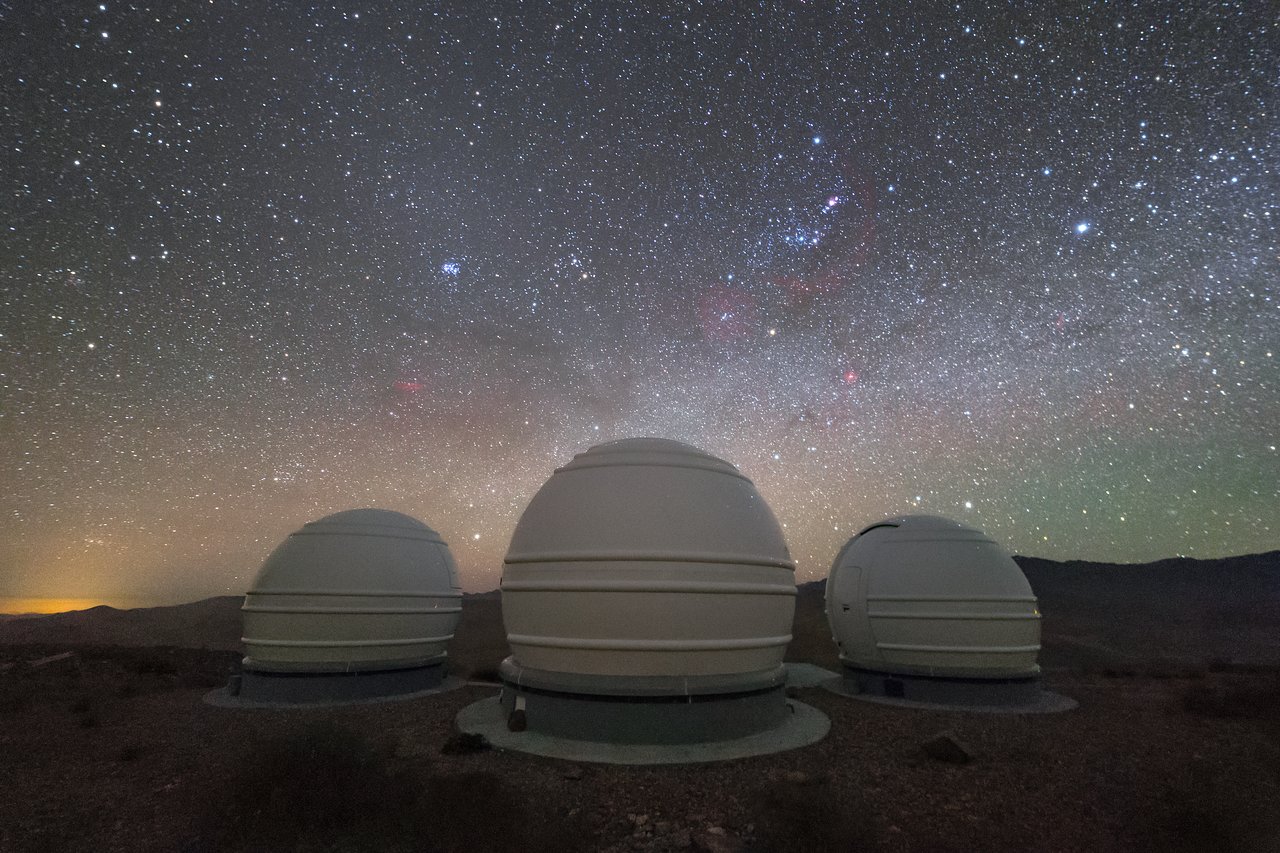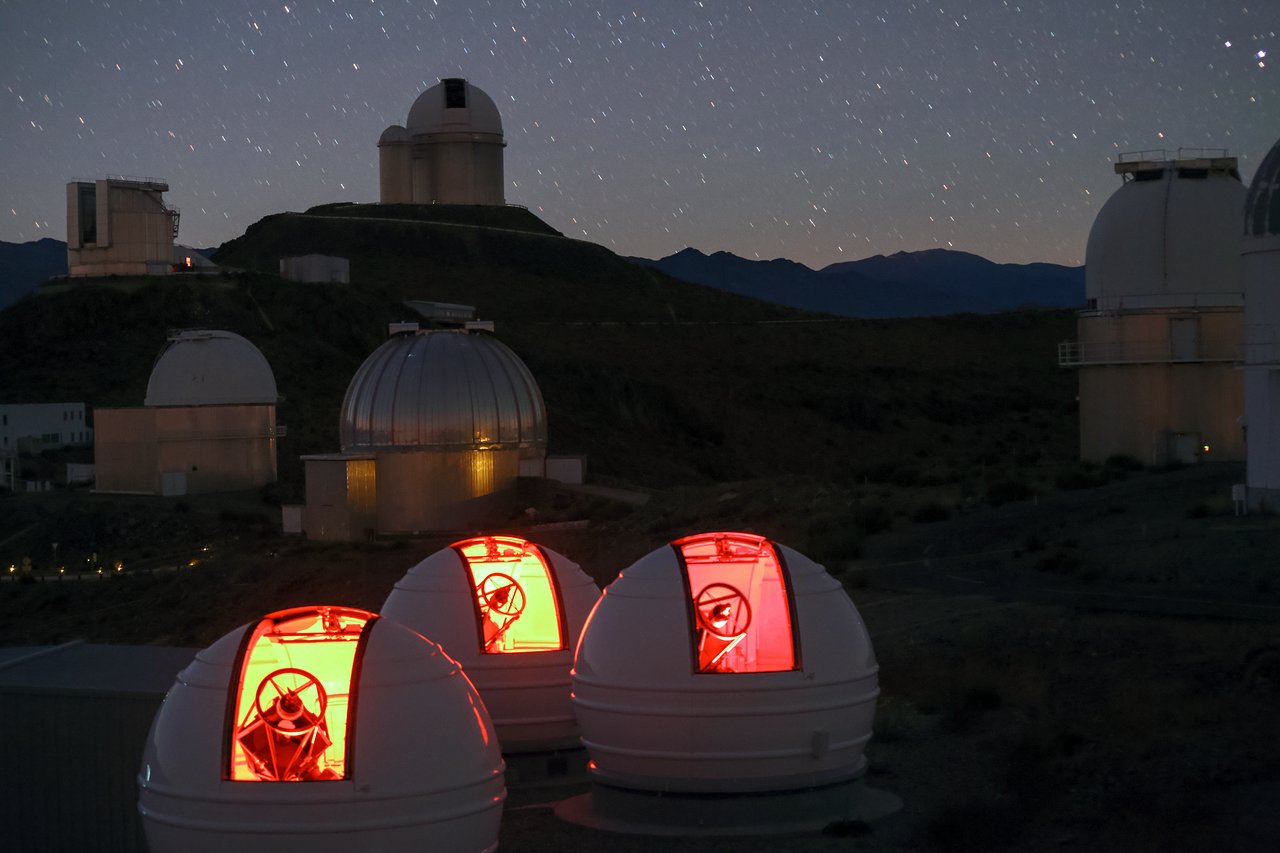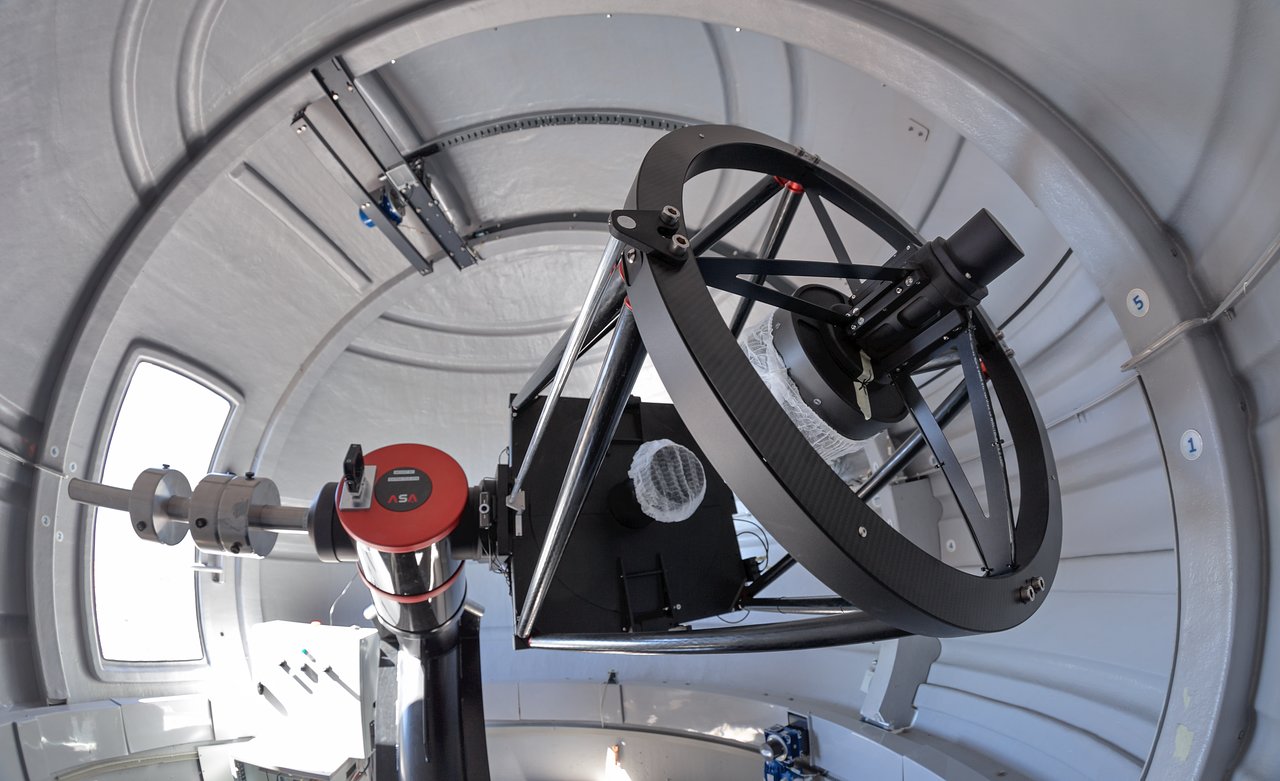New French Telescope Trio Will Scan the Sky for Earth-Like Planets
There's a new exoplanet-hunter in town.
Three new telescopes at the La Silla Observatory in northern Chile successfully peered into the night sky for the first time, providing scientists with a new tool to search for light signals from distant worlds.
The French-led ExTrA (Exoplanets in Transits and their Atmospheres) project will help scientists look for moments when the light coming off small "red dwarf" stars is subtly dimmed due to planets passing in front of them (as seen from Earth), according to a statement from the European Southern Observatory (ESO), which manages the La Silla Observatory. [The European Southern Observatory's Greatest Observatories]

The three 0.6-meter (1.97 feet) ExTrA telescopes can observe changes in a star's brightness in many different wavelengths of light, in order to catch the dimming of the star that might be caused by a planet passing in front of the star. This approach is slightly different than existing transit methods and differential photometry techniques, and by taking observations in different colors, the ground-based telescopes can correct for variations caused by Earth's atmosphere.
In short, these telescopes are aiming for a level of precision that will allow scientists to see Earth-size planets, which are often difficult to spot because of their relatively small size compared to their parent stars, according to the statement. And that's important, because the leaders of the ExTrA project don't want to just find exoplanets; they want to learn about exoplanet atmospheres with the telescopes, too.

"With the next generation of telescopes, such as ESO's Extremely Large Telescope, we may be able to study the atmospheres of exoplanets found by ExTrA to try to assess the viability of these worlds to support life as we know it," the project's lead researcher, Xavier Bonfil, said in the ESO statement. He is based at the University of Grenoble in France, and the telescopes will be operated remotely from there.

Red-dwarf stars are ideal candidates for study, according to the ESO statement, because they are "expected to host many Earth-size planets," according to the statement. One example is the sun's closest neighbor, Proxima Centauri, an M dwarf that has been found to have an orbiting Earth-size world.
Get the Space.com Newsletter
Breaking space news, the latest updates on rocket launches, skywatching events and more!
Follow Doris Elin Salazar on Twitter @salazar_elin. Follow us @Spacedotcom, Facebook and Google+. Original article on Space.com.
Join our Space Forums to keep talking space on the latest missions, night sky and more! And if you have a news tip, correction or comment, let us know at: community@space.com.

Doris is a science journalist and Space.com contributor. She received a B.A. in Sociology and Communications at Fordham University in New York City. Her first work was published in collaboration with London Mining Network, where her love of science writing was born. Her passion for astronomy started as a kid when she helped her sister build a model solar system in the Bronx. She got her first shot at astronomy writing as a Space.com editorial intern and continues to write about all things cosmic for the website. Doris has also written about microscopic plant life for Scientific American’s website and about whale calls for their print magazine. She has also written about ancient humans for Inverse, with stories ranging from how to recreate Pompeii’s cuisine to how to map the Polynesian expansion through genomics. She currently shares her home with two rabbits. Follow her on twitter at @salazar_elin.









